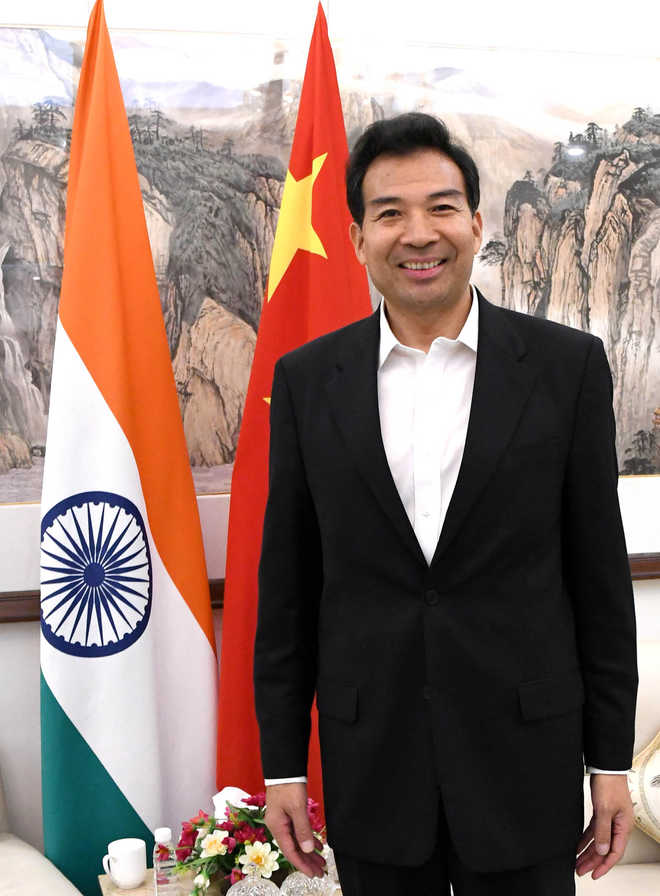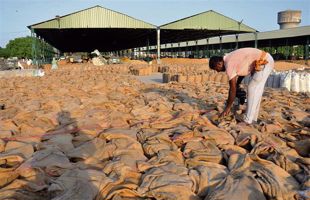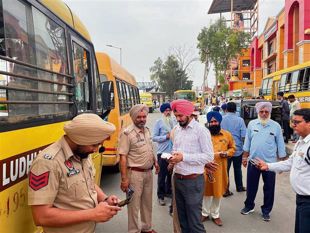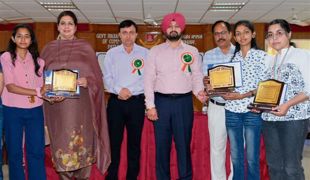
Chinese Ambassador Luo Zhaohui.
KV Prasad
Tribune News Service
New Delhi, September 30
There is a new momentum in Sino-Indian relations and work is on to translate the Wuhan vision of President Xi Jingping and Prime Minister Narendra Modi, who have already met thrice this year and a fourth meeting is in the works.
Ambassador Luo Zhaohui talked to The Tribune in an exclusive interaction.
What is your comment on China-India relations after being the Chinese Ambassador to India for two years?
This September, I completed two years as the Chinese ambassador to India during which I experienced the ups and downs of China-India relations like a roller coaster. In 2016, bilateral relations began to decline due to issues such as the Nuclear Suppliers Group. The year of 2017 saw our relations fall into a trough due to Dong Lang (Doklam) standoff.
President Xi Jinping and Prime Minister Narendra Modi, who met in Xiamen in September 2017, "put on the brake" for the downturn in our relationship. The two sides agreed to turn the old page, open a new chapter and look forward, and agreed to hold an informal summit.
In April this year, our two leaders successfully held the informal summit in Wuhan. The Wuhan summit, which serves as a milestone, adds fuel to the bilateral relations and has created a new model of exchanges between leaders. At present, China-India relations have been stabilised and improved, moving into the fast lane of development. I have used five "Cs" to summarise the priority directions for the two sides in implementing Wuhan consensus and promoting bilateral relations, namely, Communication, Cooperation, Contacts, Coordination, Control and Management.
In the past three months, the two leaders have met three times and will also meet in G20 summit in Argentina in November. General Wei Fenghe, State Councilor and Defense Minister of China, visited India in August. State Councilor and Minister for Public Security Zhao Kezhi will visit India this October. The two sides will also hold the first meeting of China-India High-Level Cultural and People-to-People Exchange Mechanism this year. The Special Representatives' meeting on the China-India Boundary Question will be held in China. I am optimistic about the prospect of our bilateral relations.
How is the Wuhan consensus being translated into action?
The two sides have built a strong momentum by setting the tone in Wuhan summit and implementing the consensus in the follow-up meetings, which has strongly led the development of bilateral relations. Next, the two sides will focus on four areas to strengthen action:
First, we should expand practical cooperation. From January to July this year, bilateral trade reached nearly $55 billion, with a year-on-year growth of 15 per cent. China attaches great importance to the bilateral trade imbalance and has lowered tariffs on some of Indian goods exported to China, increased imports of sugar, non-Basmati rice and other agricultural products from India, facilitated the export of Indian medicines to China, and further improved the trade structure. China is ready to explore the resumption of negotiations on China-India Free Trade Agreement, carry out cooperation on major projects such as high-speed rail and industrial parks, and explore cooperation in new energy, science and technology innovation and other areas. The two sides are coordinating the preparations for the first Meeting of China-India High-level Cultural and People-to-People Exchange Mechanism. China and India have established 14 pairs of sister cities and provinces. We have seen great enthusiasm and potential for cooperation at local level, which is expected to become a highlight in the follow-up cooperation.
Second, we should strengthen coordination in international and regional affairs. The United States has provoked a trade dispute, imposed sanctions on Russia for arms sales and required countries to cut crude oil imports from Iran to zero. Both China and India have suffered. The two sides are strengthening coordination to safeguard common rights and interests.
One of the outcomes of the informal summit between Chinese and Indian leaders in Wuhan is to carry out "China-India Plus" cooperation in Afghanistan. The two sides will soon jointly conduct a training programme for Afghan diplomats. We also discussed "China-India Plus" cooperation on the Rohingya issue in Myanmar and the Iranian nuclear issue. This new model of cooperation can also be extended to South Asian countries, including Nepal, which is conducive to enhancing mutual trust between China and India.
Terrorism is a great concern for India. Both China and India are victims of terrorism. I want to stress that China is firmly committed to counter-terrorism. China is ready to work with India and the international community to fight against terrorism with determination. Terrorism is a global challenge. Countries should adopt consistent policies, consensus and actions.
Addressing the Shangri-la Dialogue, Prime Minister Modiji stressed that India's Indo-Pacific policy is not aimed at any country and advocates open, inclusive and rule-based cooperation, with which the Chinese side also agrees.
China welcomes India to become a full member of the SCO and hopes to strengthen China-India cooperation in counter-terrorism and connectivity within the SCO framework and explore trilateral cooperation between China, India and Pakistan. China is ready to play a role in improving India-Pakistan relations.
As emerging major countries, China and India should continue to maintain communication on subjects such as climate change, free trade, rights and interests of developing countries, energy pricing cooperation and maritime cooperation under the framework of the UN, WTO, BRICS, SCO, G20 and East Asia summit, in a bid to safeguard common interests.
Third, we should enhance sharing of best practices in governance. Both China and India are major developing countries with similar views on their historical orientation, development stages and development goals. Socialism with Chinese characteristics has entered into a new era. The Chinese people are pursuing the "Chinese dream" and India has proposed the "New India" vision. We should seek synergy between our development strategies and share our governance experience. The two sides should learn from each other in the areas of poverty alleviation, anti-corruption, agriculture and rural areas, employment, urbanisation and environmental protection, deepen understanding of each other's respective development strategies and reform measures, and support the modernisation process of both countries.
Fourth, we should try our best to solve the boundary question. China's willingness to resolve the boundary question is clear and our attitude is positive. Ajit Kumar Doval, National Security Adviser of India, will visit China to attend the Special Representatives' Meeting on the China-India Boundary Question. Both sides will continue to discuss the framework to resolve the boundary question and strive for an "early harvest". Two rounds of Working Mechanism for Consultation and Coordination on China-India Border Affairs (WMCC) have been held this year. The two sides are committed to creating more CBMs, properly managing differences and maintaining peace and tranquillity in the border areas. In August, Chinese State Councilor and Defense Minister Wei Fenghe visited India and the two sides agreed to maintain contacts on the establishment of a military hotline.
You visited Bhutan recently. Could you share with us the details of the visit and the model of 'Two Plus One'?
Chinese Vice Foreign Minister Kong Xuanyou visited Bhutan this July. This is the first time for him to visit Bhutan as the Chinese government's representative on China-Bhutan border talks. Bhutan is the only neighbouring country with which China has not established diplomatic relations. It is also China's good neighbour and good friend. China and Bhutan have conducted cooperation in economic, trade, cultural and people-to-people exchanges. China wishes that the national assembly election be held smoothly in Bhutan and hopes that Bhutan maintain stability and achieve development and prosperity. It serves the interests of both China and India. A few days ago, I attended the "Bhutan Week" to celebrate the 50th anniversary of the India-Bhutan diplomatic relations. China is pleased to see the development of India-Bhutan relations and would like to establish diplomatic relations with Bhutan on the basis of the Five Principles of Peaceful Coexistence and resolve boundary question at an earlier date. China hopes that India could play a positive role in this regard. Relevant discussions are still going on. This could also be one direction for "China-India Plus" cooperation.
What is your view on the new stand by the regime change in Maldives and Malaysia on China and the Belt and Road Initiative?
The political changes in the Maldives and Malaysia are their internal affairs, and we never interfere. The BRI brings in bilateral and multilateral cooperation projects as an initiative for economic cooperation and inter-connectivity instead of a tool of geo-strategy. The mutually beneficial cooperation carried out by China and its neighboring countries under the framework of the BRI is conducive to the economic and social development of partner countries, regional inter-connectivity and inter-regional economic integration.
It will take some time for the new governments to get acquaintance with the BRI after the new governments take office. This is a normal phenomenon and we fully understand it. Even if there are some changes in the cooperation projects between China and these countries, this is nothing remarkable. Chinese companies seek economic benefits in their investments, and financial institutions assess risks in providing loans. Whether the BRI has put partner countries into a so-called "debt trap", the countries concerned have the best say. Leaders from countries such as Pakistan, Sri Lanka and Maldives have offered clarification.
What is China's view on the trade friction between China and the US? There is talk of greater cooperation between China and India in various multilateral organisations.
The US brandished sanctions club, and continued to withdraw from signed agreements and international organisations. In particular, it initiated a host of investigations under the auspices of Section 232 and Section 301. The trade protectionism and hegemony adopted by the US government harm others without benefiting itself and seriously threaten the principle of free trade and the multilateral trading system. China does not want a trade war, but it is not afraid of one and will fight to the end. Recently, China issued a white paper entitled "The Facts and China's Position on China-US Trade Friction" to comprehensively clarify the basic facts about China-US economic and trade relations and China's policy stance. It is normal to have some trade differences and frictions between two countries. The key is to find solutions through dialogue and consultation in a way of equality, honesty and mutual respect, rather than practicing unilateralism and protectionism.
In the 70 years since the establishment of the world multilateral trading system, trade barriers have been gradually reduced and trade frictions effectively controlled. However, like water and air, we take it for granted in life. Once lost, you'll find it indispensable. It is hard to imagine now what is going to happen to your life without the multilateral trading system and free trade.
Today, against the backdrop of in-depth development of economic globalisation and trade liberalisation, the US is practicing unilateral trade protectionism in the name of "national security" and "fair trade". It will shake the foundations of the multilateral trading regime and affect the smooth development of free trade. Not only will it affect China's economic development, but also damage the external environment of India and hinder India's booming economy.
China and India share common interests in defending the multilateral trading system and free trade. President Xi Jinping and Prime Minister Modiji spoke with one voice to safeguard the multilateral trading system and free trade at the World Economic Forum in Davos, respectively. In April this year, China and India initiated a consultation request concerning certain US duties imposed on imports of steel and aluminium products at the WTO, and officially launched the dispute settlement procedure. In June, the two sides jointly participated in publishing the "Qingdao Declaration" during the SCO Summit, clearly expressing support for building an open global economy and opposing all forms of trade protectionism. In July, the two sides jointly participated in the publication of the 10th BRICS Summit Johannesburg Declaration, and once again sent a clear message against protectionism. As the world's largest oil buyers, China and India can also promote the establishment of some kind of "buyers club" to safeguard common interests.
Are there any new measures for both sides to jointly resolve this issue as India has been seeking to cut trade deficit? China recently allowed the import of Indian rice, but prohibits export of Indian soybeans to China since 2011. China imports 900 million tonnes of soybeans annually. What about re-allowing import of Indian soybean? What is the status of trade in sugar and cotton?
China never intends to pursue a trade surplus with India. This problem is largely due to the unbalanced trade structure between the two countries. China attaches importance to addressing India's concerns. In March this year, the Chinese side sent a business delegation to India and signed import contracts worth about $2.4 billion with Indian exporters. In June, the two countries also signed an agreement for export of non-Basmati rice to China. The first consignment of 100 tonnes non-Basmati rice has been shipped to China from Mumbai. Since this year, China has also taken the initiative to cut tariffs on thousands of products from India and other countries. China's overall tariff level has been further reduced, which is basically close to that in the US and Europe. We welcome more Indian businesses to explore the market in China and would like to study and expand bilateral trade and facilitate the export of Indian agricultural products and medicines to China, so as to increase the scale and level of China-India trade and form a more balanced trade structure.
This November, the first China International Import Expo (CIIE) will be held in Shanghai. Over 1,500 companies from 180-plus countries and regions have confirmed participation in the CIIE. More than 150,000 Chinese professional buyers are expected to attend. India's participation would help reduce the trade deficit and improve the trade structure between China and India. India is preparing for the Country Pavilion of the CIIE. However, many Indian companies are not keen on participation as the CIIE coincides with the Indian festival of Diwali, and will miss the opportunity to expand exports to China.
It is learned that China banned the import of rapeseed meal, soy meal and other products from India in 2011, mainly due to the detection of harmful ingredients such as malachite green in Indian rapeseed meal. At present, China has lifted limits on the access for rapeseed meal and does not prohibit soybean imports from India. From July 1 this year, China reduced its tariffs on soybean imported from India and other four countries from 3 per cent to zero. China imports most of its soybeans from Brazil and the United States. We hope that the Indian side could negotiate and sign the protocol on Plant Sanitation Requirements with China to create conditions for Indian soybeans expanding market share in China.
In 2017, China imported $190 million raw cotton from India with a year-on-year growth of 1.7 per cent, which is the second-largest imported agricultural product from India. India exported 22,000 tonnes of sugar to China, with a trade volume of $10.89 million. In order to reduce bilateral trade deficit of India, China is willing to import more sugar, non-Basmati rice from India. The export of Indian medicines to China is an important direction for addressing the trade imbalance as it involves a large amount of money and has broad prospect. Both sides can strengthen cooperation in this area.
China has completed 40th anniversary of reform and opening-up. Can you share your thoughts on the direction?
President Xi Jinping pointed out that reform and opening up is the second revolution of China. It has not only profoundly changed China, but also significantly changed the world. This year marks the 40th anniversary of China's reform and opening up. Over the past 40 years, China's GDP has grown at an average annual rate of 9.5 per cent The Chinese people's lives have gone from shortage to abundance, from poverty to moderate prosperity. More than 700 million people in poverty under the current UN standards have been successfully lifted out of poverty, accounting for more than 70 per cent of the total global poverty reduction. China has contributed more than 30 per cent of world economic growth rate for many years, becoming the main stabiliser and driver for world economic growth. Today, China is the world's second largest economy and a major trading partner of more than 120 countries and regions.
In fact, China is still a developing country, with its per capita GDP still below the world average. The problem of uneven development is relatively prominent in terms of significant disparities between urban and rural areas, between regions, and across the social class. China still faces three arduous tasks of preventing and defusing major risks, targeted poverty alleviation, and pollution prevention and control. China will continue adhering to the fundamental national policy of reform and opening-up and pursuing development with its door wide open. China's door will not be closed and will only open even wider.
There have been reports about Religious Freedom in Xinjiang Uyghur Autonomous Region, China. What is your comment?
In recent years, Xinjiang enjoys a sound momentum of socio-economic development with people of different ethnic groups living in harmony. All Muslims enjoy full freedom of religious belief. Normal religious activities are fully guaranteed by the Chinese Constitution and relevant laws. The most serious threat facing Xinjiang today is the violent terror and ethnic separatist activities, behind which is the "Eastern Turkistan Islamic Movement", a violent separatist and terrorist organisation.
Regarding the so-called "Re-education Camp" rumours, the measures adopted by Xinjiang aim to improve stability, development, solidarity and people's livelihoods, while cracking down on ethnic separatist and violent terrorist activities in accordance with the law, safeguarding national security, and protecting people's life and property. The so-called "restricting citizens' personal freedom" and "coercive political brain washing" are groundless accusations and not consistent with the facts.
We welcome friends from Indian media to visit Xinjiang to get firsthand experience on the economic and social development, and freedom of religious belief in Xinjiang.



























